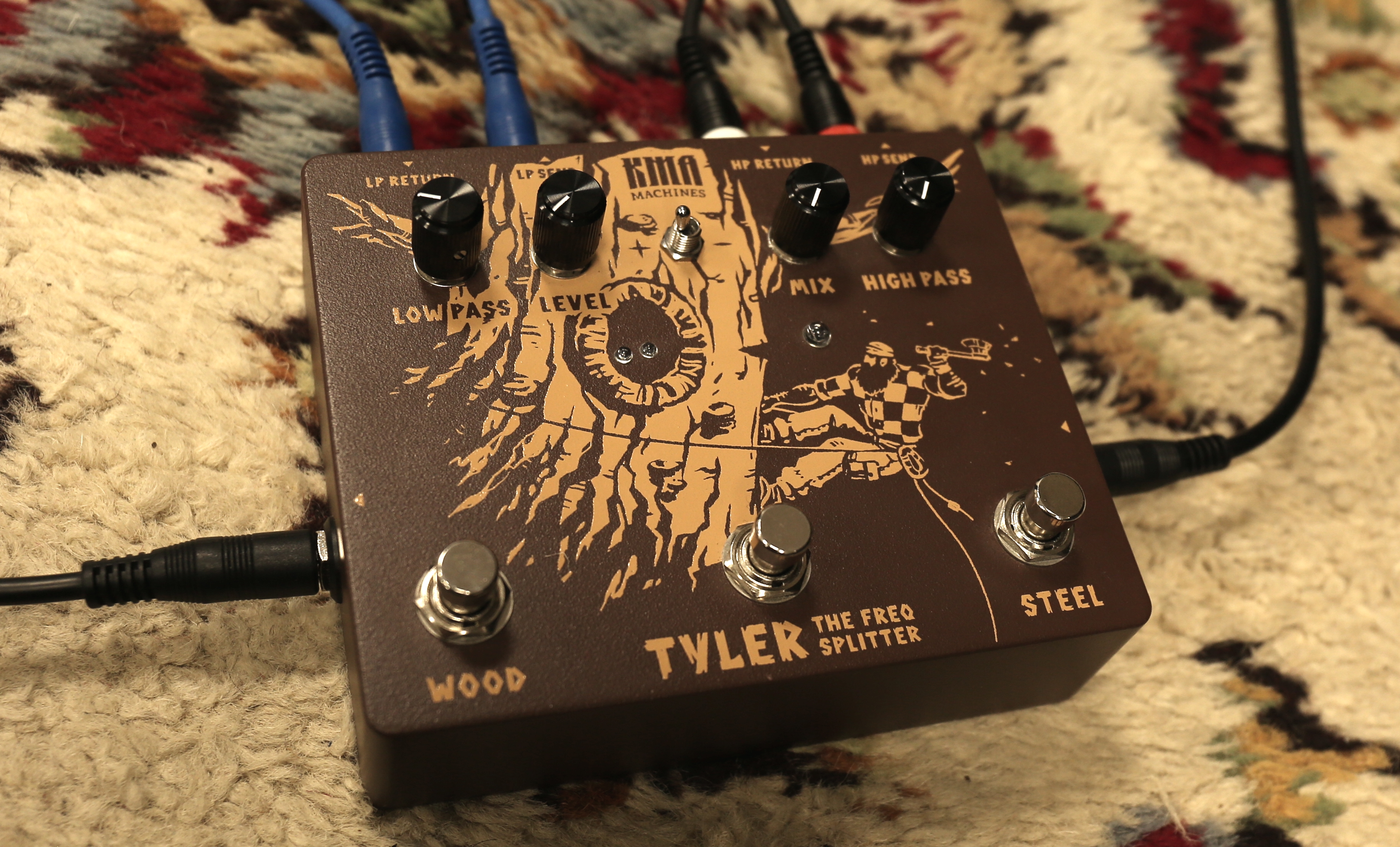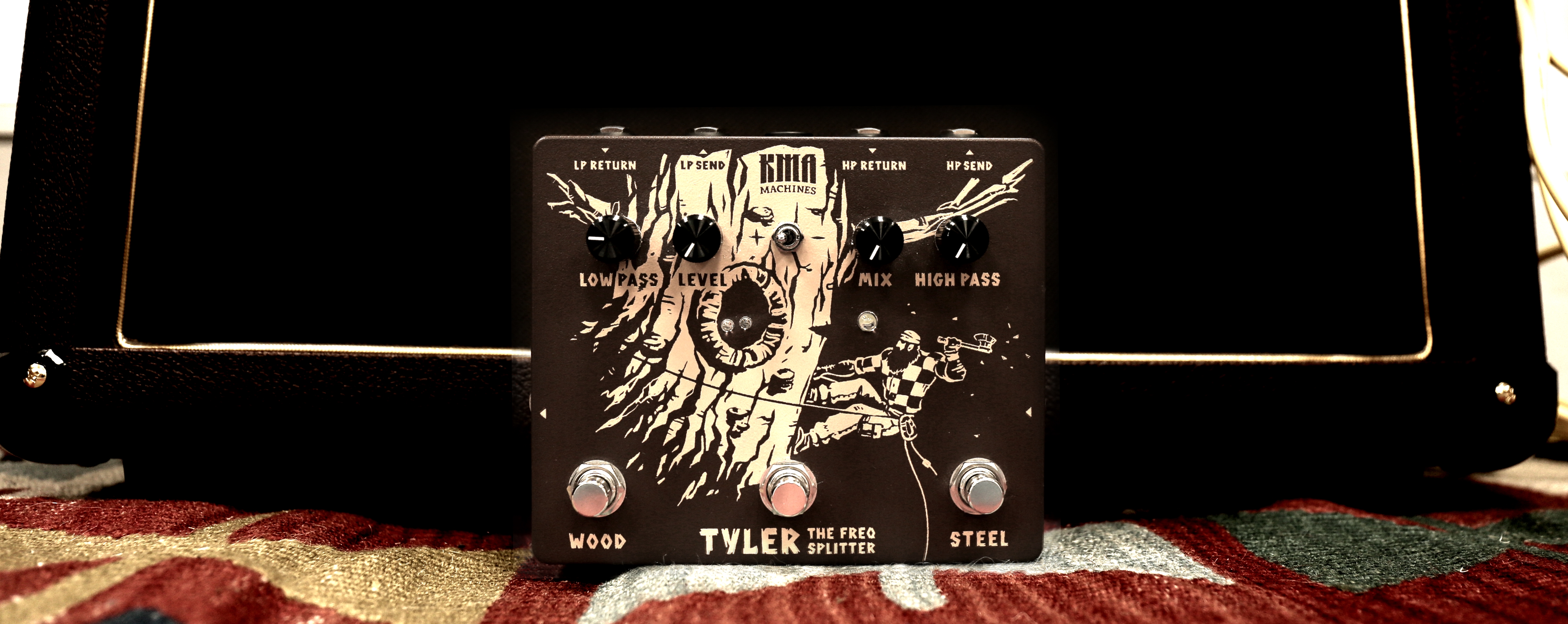KMA ‘Tyler’ pedal – Finally, a frequency splitter made for musicians (Review)
KMA Machines offer a sexy solution to frequency splitting in their pedal – ‘Tyler’. Lewis from the wonderful post-hardcore/math-rock band Hypophora gives the low-down after taking the pedal on the road for their latest tour.
Crossovers used to split the high and low frequencies of an audio signal have long been commonplace in the Hi-Fi, PA, and Pro Audio worlds and offer many advantages by allowing precise control of specific frequency bands, but unfortunately few crossover units have been designed with musicians in mind. The KMA Machines address this issue in the form of the ‘Tyler the Frequency Splitter’ crossover pedal.
The ‘Tyler’ is roughly about as wide as two standard boss-size pedals and is powered by a standard 9v adaptor. This relatively compact size and standard power requirements allow for easy integration into a pedalboard – a must for the gigging musician. It features two independent circuits that each have their own effect send and return loops – a ‘Wood’ side (handling the low frequencies) and the ‘Steel’ side (handling the high frequencies). The two sides are able to be independently turned on or off via their own dedicated footswitches (as well as a separate master footswitch for the unit).
The premise and operation of the pedal is simple: both the ‘Wood’ and ‘Steel’ sides contains separate filters sweepable from 3Khz down to 20hz (a low pass for wood and a high pass for steel) that allow you to designate the frequencies you want your independent loops to contain. These loops are then combined together and this is controlled by a ‘Mix’ knob which allows you to choose whether your signal contains more of the wood side (Mix knob fully left), steel side (Mix knob fully right) or a 50-50 blend of the two. Of important note is a ‘Phase’ switch which allows you to correctly set the phase for the blend of the two signals – incorrect phase can often lead to ‘thin’ sounds.

As a bass player that uses a moderate amount of pedal-based distortion, I found that by putting my distortion pedal in the ‘Steel’ loop, with the HPF set to around 800hz and a compressor set to a high ratio and compression amount in the ‘Wood’ loop with the LPF set to around 200hz, I was able to achieve a crisp, defined distortion with a clean, powerful low end – something that can easily be lost with most bass distortion pedals.
For my relatively simple, bass-distortion focused needs, the ‘Tyler’ allowed me to choose my distortion character via my pedal of choice and retain the thick, clean low-end I was looking for, which it did perfectly. My only real issue is I did find myself wishing for independent volume controls for each frequency band rather than a master mix knob, but this is picking at straws. For someone who is more creative and liberal with pedals, I believe many interesting combinations of split frequencies running through all sorts of effects could certainly lead to interesting and unique possibilities, and the compactness of the ‘Tyler’ allows players to do this with an ease and portability that hasn’t been available before.
